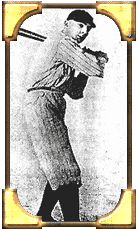|
1920: Lawren Harris is the leader and one of the most famous of the Group of Seven artists. The son of the wealthy Harris industrial family, he's a skilled organizer who blends vision with determination. Art is his personal mission, and Harris believes that a country that ignores the arts leaves no record of itself worth preserving.
Harris first studies art in Berlin, and upon returning home, sketches and paints slums and houses. No other member of the Group of Seven paints Toronto scenes as consistently as Harris. It is a subject that hasn't interested painters before.
In 1920, Harris is a founding member of the Arts and Letters Club, a vibrant meeting place where artists of all descriptions feel welcome. That same year, the Art Gallery of Ontario opens. The Group of Seven exhibits for the first time and seven times more in the next ten years, much to the delight and horror of local critics. After years of aping Europeans, Torontonians begin to discover their own art and geography.
 |
1920: Lionel Conacher is the city's best loved all round sports hero, known as "the Big Train." In 1920 he wins the Canadian light-heavyweight championship then boxes a 3 round exhibition bout with Jack Dempsey the year after. Conacher's power, stamina and speed (he runs a l00 yards in under 10 seconds) are particularly suited to lacrosse and football. The same year he leads the Argonauts to a 23-0 victory over Edmonton, scoring 5 points himself in the Grey Cup, he turns hockey pro for Pittsburgh in 1925. He goes on to play for the NY Americans, Chicago Black Hawks and Montreal Maroons. He's hockey's first All Star in 1934.
Conacher caps his career by entering politics in 1935, then federal politics in 1949. He's voted Canada's Athlete of the half century, excelling in all sports - football, baseball, lacrosse, boxing and hockey. An athlete to the end, Lionel Conacher dies of a heart attack in 1954 after hitting a triple in a charity softball game at 52 years of age.
1925: Ted Rogers is the city's first high-tech communications mogul. He invents the plug in, battery-less radio and revolutionizes a whole industry. In 1925, he takes his new invention to Toronto's National Exhibition, and fame and fortune soon follow. He founds Rogers Majestic Radio Company and in 1927 his radio station goes on the air - CFRB. RB stands for Rogers Batteryless. Ted goes on to explore television and radar when he dies suddenly in 1938.
1928: Bobbie Rosenfeld is one of Canada's Olympic relay gold medalists and a heroine to millions of Canadians. A Russian Jewish immigrant, Bobby is an astonishing, all round athlete - the only woman all rounder in the Hall of Fame.
In 1928 she sets 3 records which will last into the fifties: 18 feet 3 inches in the running broad jump, 120 feet in the discus and 8 feet l inch in the standing broad jump. At the 1928 Olympics in Amsterdam, she is a member of the gold medal relay team and returns to Toronto to a heroine's welcome.
1931: Conn Smythe is a tough little Irishman who erects Toronto's most venerated institution. Starting out as a hockey player for the New York Rangers, Smythe comes back home when he's fired. Looking for a team, he raises the purchase price of $160,000 for the St. Pats, which he renames the Maple Leafs.
In 193l, after creating the Maple Leafs, he raises the money for Maple Leaf Gardens. The place is yanked up in a measly five months.
In a bid for the Stanley Cup, Smythe tries to buy King Clancy from the Ottawa club in 1931. He's short $10,000 of the asking price of $35,000. Smythe makes up the money with a successful day of betting at the Woodbine. The Leafs win the first of 11 Stanley Cups and all through the '30s offer up heroes like Red Horner, Hap Day, Charlie Conacher, Busher Jackson, Ace Bailey, Syl Apps and of course, King Clancy.
1941: Comedians Johnny Wayne and Frank Shuster get their first laughs as kids, entertaining their cub scouts packs with skits in the late 1930s. They continue doing skits all the way to university, when they get their first break, a morning show with radio station CFRB. During WWII, Wayne and Shuster follow Canadian troops to France. In the tradition of the "Dumb Bells", a WWI comedy troupe, they entertain the front line. Five times they perform in a cave in France.
In 1962 The Wayne and Shuster Hour is launched. Both Americans and Canadians rate t hem the top comedy team, beating out Lucille Ball and Vivian Vance.
|
